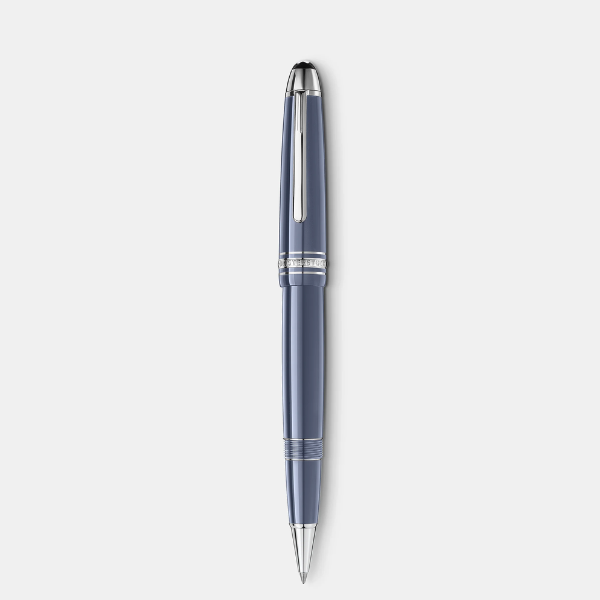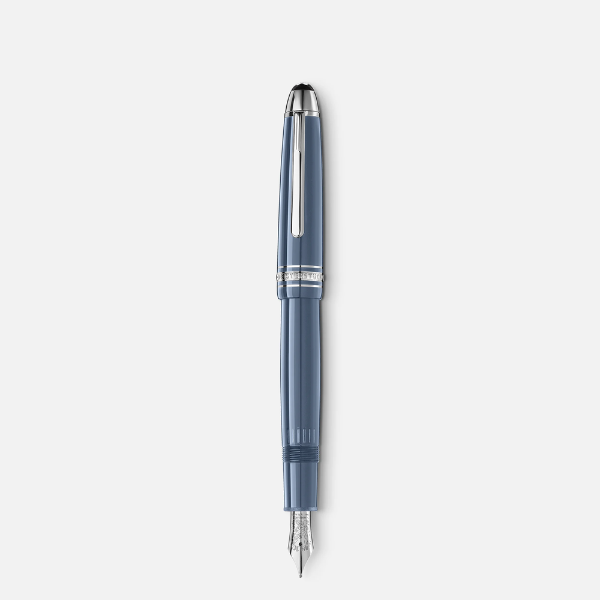Discovering Rollerball Pens: An Insight into Their Design and Functionality
Rollerball pens occupy a unique position in the writing instrument landscape, bridging the gap between the fluidity of fountain pens and the practicality of ballpoint pens. Known for their smooth writing experience, rollerball pens combine the best of both worlds, offering the ease of a ballpoint pen with the wet ink flow characteristic of a fountain pen. This introduction aims to delve into the distinctive design and functionality of rollerball pens, exploring how they have become a favored choice for those who value precision and smoothness in their writing. By examining their evolution and the technology behind their operation, we can appreciate why rollerball pens are not just tools for writing but sophisticated instruments that cater to various writing needs and preferences.
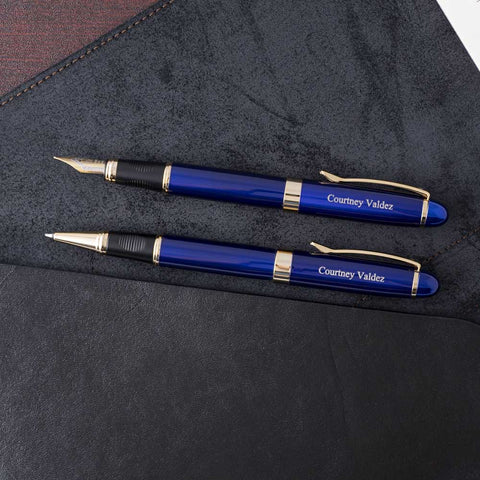
The Origin and Evolution of Rollerball Pens
The rollerball pen, a relatively modern addition to the writing instrument family, originated in the 1960s as an innovation seeking to combine the best features of ballpoint and fountain pens. Its development was driven by the desire for a pen that could provide the smooth ink flow of a fountain pen with the convenience and reliability of a ballpoint pen.
Early rollerball pens were designed to address the common issues faced by fountain pen users, such as ink leakage and maintenance, while offering a smoother writing experience than ballpoint pens. These initial designs featured water-based ink, similar to that used in fountain pens, which flowed freely through the rollerball tip, providing a wetter and smoother writing line.
Over the years, technological advancements have significantly improved the design and performance of rollerball pens. Innovations in ink formulation and pen mechanics have led to pens that are less prone to leaking, have longer shelf lives, and offer more consistent writing experiences. The evolution of the rollerball pen has also seen a diversification in styles, from luxury models crafted by renowned pen manufacturers to everyday use pens known for their affordability and reliability.
Today, the rollerball pen stands as a testament to the progress in pen technology, offering users a reliable and enjoyable writing tool. Its development reflects a continual quest for the perfect writing instrument, one that combines the tradition of liquid ink with the practicality and ease of a modern pen.
Understanding the Anatomy of a Rollerball Pen
The rollerball pen is ingeniously designed, with each component working harmoniously to provide a seamless writing experience. Here’s a closer look at the main parts of a rollerball pen and the materials commonly used in their construction:
- Barrel: The barrel is the main body of the pen, holding the ink reservoir and providing structure. It can be made from various materials, including plastic, metal, or even luxury materials like carbon fiber or precious metals, affecting the pen’s weight, balance, and aesthetic appeal.
- Cap: Many rollerball pens have a cap that protects the nib when not in use. The cap also prevents the ink from drying out and can contribute to the overall design and functionality of the pen, with features like clips for easy carrying.
- Ink Reservoir: Inside the barrel is the ink reservoir, which holds the liquid ink. The reservoir can be a refillable cartridge or a disposable unit, depending on the pen’s design. The ink used in rollerball pens is typically water-based, allowing for smoother flow and more vibrant colors compared to the oil-based ink of ballpoint pens.
- Rolling Ball Mechanism: At the tip of the pen is the rolling ball mechanism, which includes a small ball that dispenses ink as it rolls across the paper. This ball, usually made of stainless steel or tungsten carbide, picks up ink from the reservoir and transfers it to the paper, allowing for smooth and precise writing.
The construction and materials of a rollerball pen are key factors that influence its writing quality and durability. The choice of materials not only impacts the pen’s look and feel but also its performance, with higher-quality materials often leading to a better writing experience. Understanding the anatomy of a rollerball pen is essential for appreciating its functionality and the technology behind its smooth writing capability.
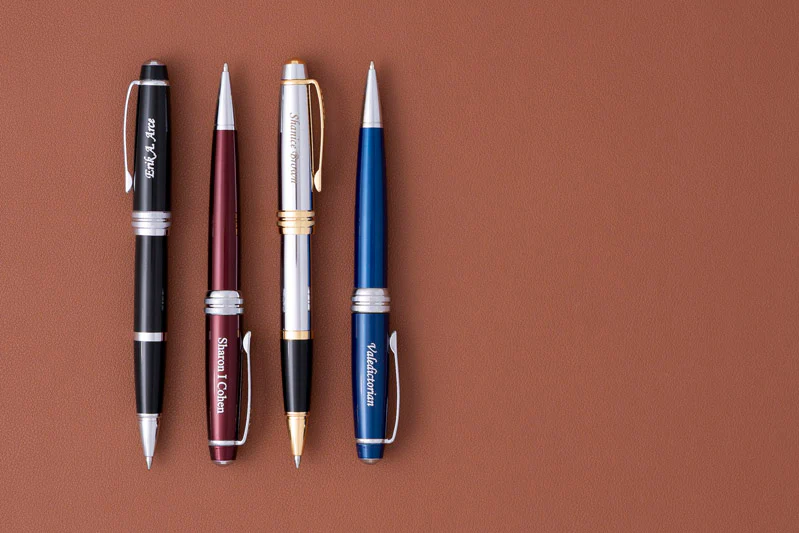
The Rollerball Nib and Ink System
The heart of a rollerball pen lies in its nib and ink system, which distinguishes it from other pen types. The rollerball nib, typically made from durable metals like stainless steel, houses a small ball that rolls smoothly across the paper, dispensing ink evenly and consistently.
Unlike the thicker oil-based ink used in ballpoint pens, rollerball pens utilize a water-based or gel ink, offering a writing experience that closely mimics that of a fountain pen but with the convenience of a ballpoint. This ink is known for its vibrant colors and smooth flow, providing a seamless writing experience that is less likely to skip or require extra pressure.
The ink in rollerball pens is delivered to the paper through a capillary action that keeps the flow consistent and prevents the ink from drying out quickly when not in use. This system allows for a finer, more precise line, ideal for detailed writing or drawing tasks.
One of the significant advantages of the rollerball pen’s ink system is its versatility in terms of color and composition. The inks can range from standard black and blue to a wide array of colors, even including options with shimmer or other special effects, catering to the diverse preferences of users.
Understanding the intricacies of the rollerball nib and ink system sheds light on why these pens are favored for their smooth, effortless writing and rich ink delivery. This design not only enhances the writing experience but also reflects the innovative engineering behind these popular writing instruments.
Design Variations and Innovations in Rollerball Pens
The world of rollerball pens is marked by a diverse array of design variations and innovations, reflecting the evolving needs and preferences of users. These pens come in various forms, from sleek, professional models to vibrant, casual designs, catering to a wide audience.
- Retractable vs. Capped: Rollerball pens are available in retractable models, which offer the convenience of one-handed operation, and capped versions, which protect the nib and ink from drying out when not in use. The choice between the two often depends on user preference for convenience or tradition.
- Refillable Options: Many rollerball pens feature refillable designs, allowing users to replace the ink cartridge while retaining the pen body. This design is not only cost-effective but also environmentally friendly, reducing waste and promoting sustainability.
- Material Choices: The construction materials of rollerball pens vary widely, from durable plastics and metals to luxurious materials like sterling silver, resin, and even wood. These materials influence the pen’s weight, balance, and overall feel in the hand, as well as its aesthetic appeal.
- Innovative Features: Some rollerball pens incorporate innovative features such as ergonomic grips, spring-loaded clips, and even stylus tips for use with touchscreen devices. These additions enhance functionality and user experience, demonstrating the adaptability of rollerball pen designs to modern needs.
- Artistic and Custom Designs: Beyond functionality, rollerball pens are often designed with artistic flair, featuring custom artwork, patterns, and finishes that reflect personal style and taste. Limited edition series and collaborations with artists bring a collectible aspect to rollerball pens, appealing to enthusiasts and collectors alike.
These design variations and innovations in rollerball pens showcase the blend of tradition and modernity in their evolution. By catering to diverse writing needs and aesthetic preferences, rollerball pens continue to be a popular choice in the realm of writing instruments, offering a balance of style, functionality, and comfort.
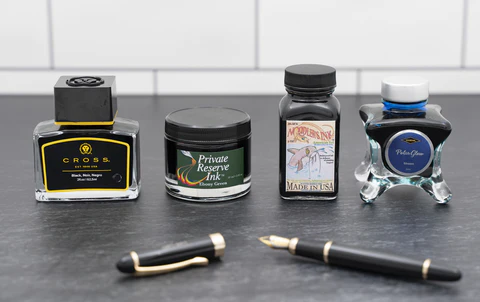
Comparing Rollerball Pens with Other Pens
Rollerball pens stand out in the writing instrument world for their unique balance of features, situated between the smooth flow of fountain pens and the convenience of ballpoint pens. Here’s how rollerball pens compare to these other popular types:
- Writing Experience: Rollerball pens offer a smoother writing experience compared to ballpoint pens due to their water-based or gel inks, which flow more freely. Unlike fountain pens, which may require a certain angle and pressure to write correctly, rollerball pens are more forgiving and versatile, catering to various writing styles and pressures.
- Ink Flow: The ink in rollerball pens tends to be wetter and more saturated than the oil-based ink used in ballpoint pens, resulting in a more vivid line. However, it dries slower than ballpoint ink but faster than fountain pen ink, striking a balance that reduces smudging while providing a satisfying writing experience.
- Maintenance Requirements: Rollerball pens are generally low-maintenance compared to fountain pens. They don’t require the regular cleaning and maintenance that fountain pens do, but they may still experience occasional issues like clogging or leakage, more so than ballpoint pens.
- Pros and Cons: Rollerball pens combine the best aspects of ballpoint and fountain pens. They provide a smoother writing experience with less pressure needed, making them ideal for long writing sessions. However, their inks can deplete faster than ballpoint pens due to the wetter ink flow, and they may bleed through thin paper, unlike the thicker ink of ballpoint pens.
In summary, rollerball pens offer a unique writing experience, merging the ease of use found in ballpoint pens with the fluid writing quality of fountain pens. This balance makes them a preferred choice for many who seek comfort and quality in their writing instruments.
Maintenance and Care for Rollerball Pens
Maintaining and caring for rollerball pens are key to ensuring their longevity and optimal performance. Unlike ballpoint pens, which require minimal maintenance, rollerball pens need a bit more attention due to their liquid ink system. Here’s how to keep them in top condition:
- Regular Cleaning: To prevent clogging and maintain ink flow, regular cleaning of the rollerball tip and reservoir is recommended. This can be done by wiping the tip with a soft, damp cloth and flushing the reservoir with water if refillable.
- Proper Storage: Store your rollerball pen with the tip facing upward when not in use to prevent ink from settling and potentially clogging the tip. Keeping the pen capped or retracted when not in use also minimizes the risk of drying out.
- Using the Right Ink: Always use the appropriate ink or refills recommended by the manufacturer. Rollerball pens are designed to work with specific ink formulations that balance flow and drying time, reducing the likelihood of leaks and smudges.
- Handling with Care: Although rollerball pens are more robust than fountain pens, they still require careful handling. Avoid dropping the pen or applying excessive pressure during writing, which can damage the tip or cause ink leaks.
- Addressing Issues Promptly: If you notice any issues like skipping, leakage, or inconsistent ink flow, address them promptly. Sometimes, simple actions like cleaning the tip or using a new refill can resolve these problems.
By following these maintenance and care tips, you can enhance your writing experience with a rollerball pen and ensure that it remains a reliable tool for expression and communication.

Rollerball pens, with their distinct design and functionality, offer a unique writing experience that bridges the gap between fountain and ballpoint pens. They provide the smoothness and richness of a fountain pen’s ink flow, combined with the convenience and reliability of a ballpoint pen’s mechanics. This exploration of rollerball pens has revealed their versatility and appeal, showcasing why they are favored by many for various writing tasks.
In summary, the design and functionality of rollerball pens make them a standout choice in the modern writing instrument landscape. They cater to users who appreciate the fluidity of ink and the ease of writing, without the maintenance demands of a fountain pen. Whether used for personal journaling, professional tasks, or artistic expression, rollerball pens embody a blend of tradition and innovation, continuing to captivate the hearts of writers and pen enthusiasts alike.


